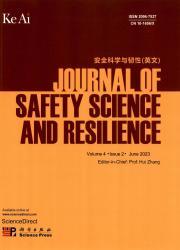Machine learning for occupational accident analysis: Applications, challenges, and future directions
IF 3.4
Q1 PUBLIC, ENVIRONMENTAL & OCCUPATIONAL HEALTH
引用次数: 0
Abstract
Machine learning (ML) drives progress in occupational accident prevention across diverse sectors. However, significant challenges persist in aligning these tools with practical safety needs, including accurate risk assessment, incident prediction, and targeted prevention strategies. While prior reviews focused narrowly on specific industries or data types, this study presents a comprehensive analysis of ML models in accident analysis, categorizing them by accident type, industry application, and modeling methodology. This study addresses critical challenges in ML model development—such as data quality, hyperparameter tuning, and managing class imbalances—and examines less-discussed topics, including explanatory variable selection and strategies for mitigating overfitting. This review thoroughly assesses the current state of ML-based accident prediction, highlighting critical gaps, methodological limitations, and potential research directions. By analyzing 504 studies across three perspectives—Accident Type, Industry Application, and Modeling Methodology—this review identifies pressing challenges, including (1) limitations in data quality and availability, especially for real-time sources; (2) inadequate model interpretability across applications; (3) difficulties in handling imbalanced accident datasets; and (4) the lack of an integrated framework for incorporating proactive data and industry-specific risk factors. The findings outline a roadmap for advancing ML in occupational safety by enhancing model robustness, improving interpretability, and expanding data sources. This review aims to better align ML applications with safety objectives, promoting data-driven approaches for effective accident analysis and prevention across industries.
机器学习用于职业事故分析:应用、挑战和未来方向
机器学习(ML)推动了各个部门在职业事故预防方面的进步。然而,在将这些工具与实际安全需求相结合方面仍然存在重大挑战,包括准确的风险评估、事件预测和有针对性的预防策略。虽然之前的评论只关注特定的行业或数据类型,但本研究对事故分析中的ML模型进行了全面分析,并根据事故类型、行业应用和建模方法对其进行了分类。本研究解决了机器学习模型开发中的关键挑战,如数据质量、超参数调优和管理类不平衡,并研究了较少讨论的主题,包括解释变量选择和减轻过拟合的策略。本文全面评估了基于机器学习的事故预测的现状,强调了关键差距、方法局限性和潜在的研究方向。通过从事故类型、行业应用和建模方法三个角度分析504项研究,本综述确定了紧迫的挑战,包括:(1)数据质量和可用性的限制,特别是对于实时来源;(2)不同应用的模型可解释性不足;(3)不平衡事故数据集处理困难;(4)缺乏整合前瞻性数据和行业特定风险因素的综合框架。研究结果概述了通过增强模型鲁棒性、提高可解释性和扩展数据源来推进ML在职业安全中的发展路线图。此次审查旨在更好地将机器学习应用与安全目标结合起来,促进数据驱动的方法,以便在各个行业进行有效的事故分析和预防。
本文章由计算机程序翻译,如有差异,请以英文原文为准。
求助全文
约1分钟内获得全文
求助全文
来源期刊

安全科学与韧性(英文)
Management Science and Operations Research, Safety, Risk, Reliability and Quality, Safety Research
CiteScore
8.70
自引率
0.00%
发文量
0
审稿时长
72 days
 求助内容:
求助内容: 应助结果提醒方式:
应助结果提醒方式:


